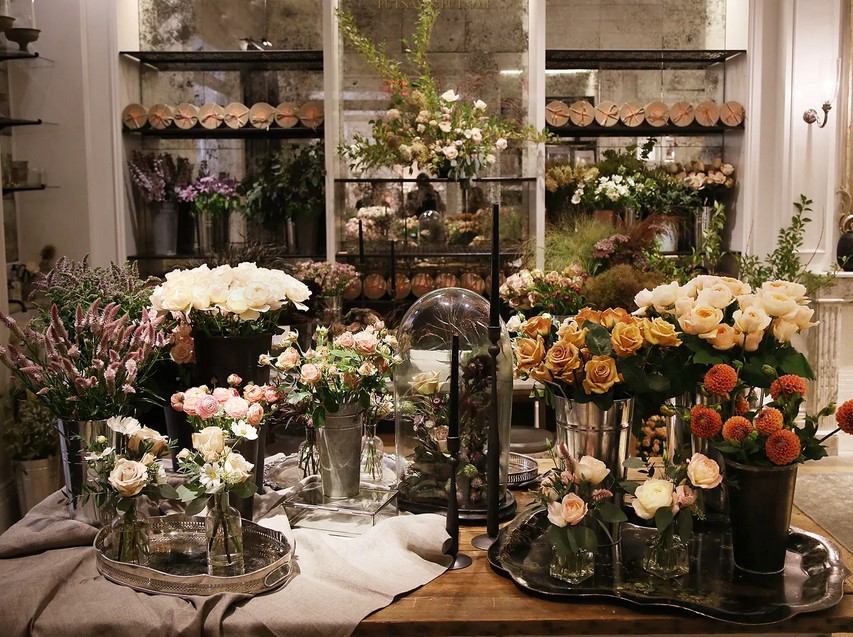
What flowers are most often found in flower shops? You’ve probably seen them in a flower shop at least once, roses Franklin Square, NY, are a staple of any flower shop, and they come in standard sizes and many standard colors. The best filler flower for a heavy design is a wax flower, Limonium and Caspia can give your design an upscale feel. While roses and other common flowers are great choices for a floral arrangement, it’s important to look for various blooms for your bouquet.
Coneflowers
A native of North America, coneflowers have 60 to 100 different varieties. Two are threatened species, which means they are in danger of extinction. While their appearance is similar to a daisy, the flowers are unique because they can prevent the growth of other plants. Native Americans, who have used the plant for hundreds of years, are particularly fond of it. This phenomenon, known as allelopathy, is why its high demand in flower shops.
Despite their name, coneflowers are hardy plants that bloom from midsummer through early fall. They are drought-tolerant and need at least an inch of moisture per week. They also self-seed easily and can survive in gardens. Some gardeners collect the seeds for future plantings. They can be transplanted into pots when they reach two inches. If you want to grow these flowers indoors, you should select large containers for their flower head to grow.
Peonies
While peonies are typically grown as cut flowers and sold in flower shops, they can also be grown indoors. Peonies require adequate air circulation and good drainage. If you choose to grow peonies indoors, place them near a window that receives full sunlight. Peonies like a balanced pH and need a moderate amount of water. You can avoid overwatering peonies by opening windows whenever possible.
Plant peonies in 0.5 to 2 inches of soil above the roots. Peonies should be planted deeper in colder climates and shallower in warmer regions. In zones 7-8, plant peonies at half an inch deep. Plant peonies one to two inches deep in zones 5-6 and 2-4. Peonies should not be planted in greenhouses during winter because they may develop root rot. During the cold winter months, the ground will freeze solid and prevent proper drainage.
Snapdragons
The most common type of snapdragon is the trailing variety. Trailing snapdragons have fibrous roots that prevent them from toppling. The taller varieties, however, may need to be staked or supported. When choosing a variety, it is important to consider its flowering period as deadheading helps prevent botrytis disease and gray mold from developing on old flowers. Trailing snapdragons include the Candy Showers series and Cascadia mix. These flowers make excellent choices for hanging baskets and raised beds.
Snapdragons are classified as a dwarf, moderate, or tall. Dwarf snapdragons are just six to fifteen inches tall and have several bloom spikes. Tall snapdragons can grow to be as tall as 48 inches. While the dwarf type is used as a border plant in the garden, medium, and tall types are preferred for cut flower arrangements. You can cut off tightly budded stem tips for a vase of fresh snapdragons, so the remaining flowers open faster.
Lisianthus
Lisianthus is a beautiful and elegant plant that grows well in the heat. They do not require full sun but would benefit from a little afternoon shade if summers are hot. They prefer well-drained soil but can tolerate part shade. If you want to grow lisianthus in a container, make sure you plant the seed in a well-drained spot.
The seeds for lisianthus are tiny and are often coated in wax. They should be picked before a big storm to avoid damage from heavy rain. Ensure the flowers are kept in a cool, dry place away from direct sunlight, vents, and heaters. Lisianthus flowers need moderate humidity and good air circulation to remain beautiful. Whether you’re looking for a beautiful bouquet or a colorful arrangement, lisianthus flowers can add a festive touch to any flower arrangement.
Hibiscus
The hibiscus is a large and fragrant tropical plant that grows between three and six feet high. Its flowers are trumpet-shaped and contain pistils, which protrude from the horn of the flower. Hibiscus plants grow in groups of many, with some species producing many flowers at once. The flowers last for one day and can be stored in the refrigerator for extended enjoyment.
The hibiscus plant family contains a variety of species and can be grown as ornamental flowers, vegetables, fiber plants, and cacti. In South Carolina, the hibiscus flower is grown annually, but there are also several closely related species, including dwarf hibiscus. These plants grow up to three feet tall, and mature clumps can span a length as long as they are wide.
Jasmine
Jasmine has showy white petals and deep green leaves making it one of the most common flowers in flower shops. It is native to the West Indies and tropical America, thriving in humid, warm conditions. Plants need regular watering to keep them healthy and fragrant. Unlike other varieties of jasmine, the Night-blooming variety doesn’t require much care once it has blossomed.
In addition to being a beautiful flower, jasmine also has many benefits. Jasmine is a versatile plant that can grow indoors in the winter. Jasmine is very easy to grow and can serve as an indoor plant or garden decor. The fragrance of jasmine is known to send romantic messages. Whether you celebrate a birthday, anniversary, or just because, send a beautiful flower with FloraQueen. They deliver worldwide.
